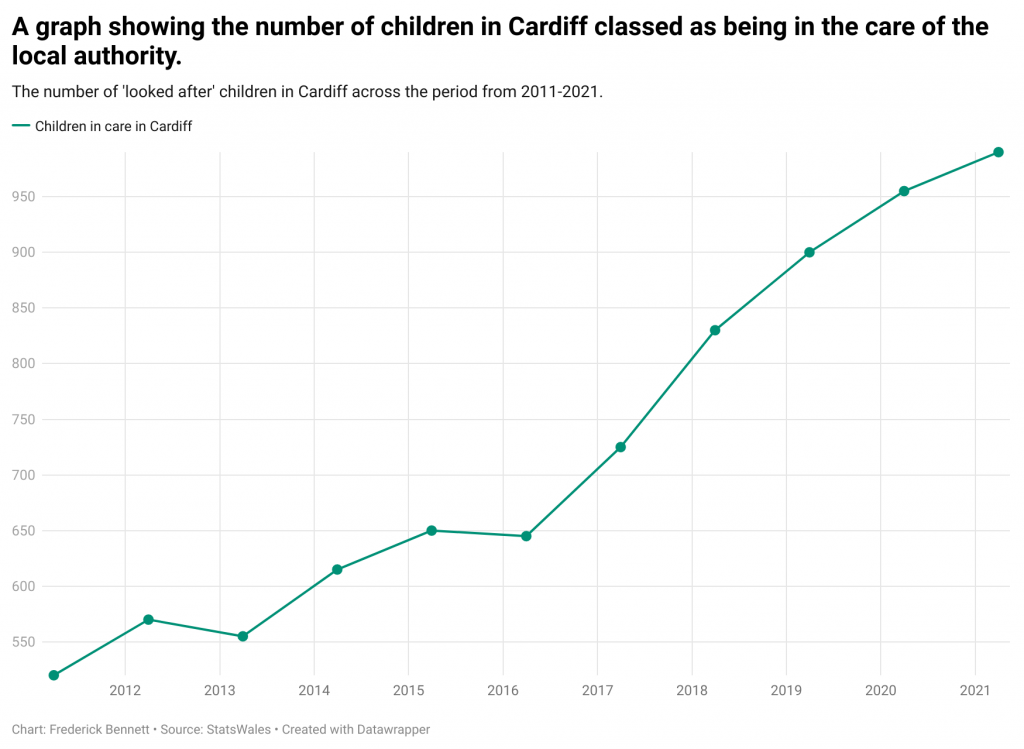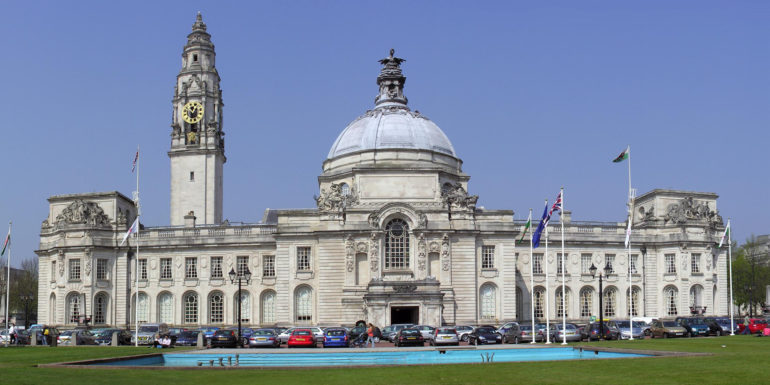But the issue runs much wider as figures in Wales show a rise of nearly 90%
THE number of children who are looked after by Cardiff Council almost doubled in 10 years, but figures show the number has been rising across Wales for decades.
In 2011, the number of children aged under one to 17 who were looked after by the council was 520, but this number rose to 990 by March 2021.
The issue was raised at First Minister’s Questions this week when Mark Drakeford said: “Too many children are removed from their families into the care system. Numbers have risen year on year over the last two decades.”

Sophie Wood, a Research Associate at Cardiff University’s CASCADE children’s services research facility said: “This is much more than a Cardiff problem, from 2003-2021 the number of children being looked after by local authorities around Wales rose by 87%.”
“However, we are seeing a huge variation of the increases across Wales with some local authorities rising far more than others.”
Figures in Monmouthshire rose by 357% while figures in Carmarthenshire only rose by 24% from 2003-2021, for example.
To be considered ‘looked after’ by the local authority, a child who is suffering or is at risk of serious harm will first receive a care order from a court which gives parental responsibility to the council.
They can be referred by people such as doctors or schools who might have concern for the child. Once a care order is placed, social services will decide what route is best for the child.
They could be put into foster or residential care, but they may be put into the care of any extended family.
There are a variety of reasons for the increase over the last two decades including more drug and alcohol issues among parents which could place a child in more dangerous circumstances.
“What we are hearing so far is that Covid has not played such a massive role in the increase of these numbers, Covid has only been a problem for a couple of years while this has been a problem for nearly 30 years,” said Ms Wood.
“One other issue is the increase in Care Orders over the last few years following cases such as that of Baby P,” said Ms Wood.
Baby P (Peter Connelly) died in London in 2007 after suffering more than fifty injuries in an eight-month period while in the care of his mother, her partner and her partner’s brother. Haringey Council was criticised for not spotting the issue and taking Peter into care and the case led to several far-reaching inquiries.
Cases like this may have made people more inclined to report their concern to social services and to place children into care earlier, suggested Ms Wood.
At First Minister’s Questions, Mark Drakeford said: “This is a very significant matter of public policy, things can be done about this issue.”
Childcare experts have put forward ideas about how to tackle increases of children being looked after by local authorities.
“We need a system that allows practitioners to exercise judgment and creativity, so that our safeguarding support is tailored to individual needs and operates with greater fluidity,” wrote Dez Holmes, the Director of Research in Practice for the NSPCC blog in 2021.

“One thing that could be improved is the attitude to these problems,” said Ms Wood.
“Local authorities are under huge pressure and should not have the blame placed with them. More work could be done among all those involved like families, social services, schools and courts to work together better to decide courses of action which might be better for the rights of the child.”
Additionally, the CASCADE research facility is looking into more preventative measures which will attempt to stop these issues before they happen.
“Interventions such as family group conferences will enable the parents and children to come up with a plan together that may better suit the child, these services may need better support and funding,” continued Ms Wood.
If you have concern for a child, click here.
For more information on children’s charities, click here.



